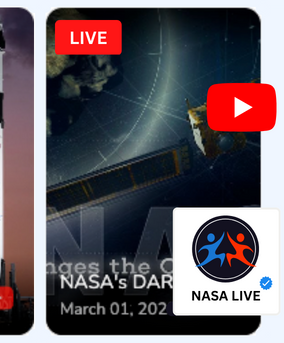Creating Immersive 360 Degree Videos for Web and Social Media

The world of digital marketing has evolved significantly, and with the advent of innovative technologies, 360-degree videos have become a powerful tool for brands to interact with their audiences. In this article, we will explore the process of creating immersive 360-degree videos, how they can be used on web and social media, and why they are an essential component of an effective digital marketing strategy.
The Basics of 360-Degree Videos
Definition
360-degree videos are a form of interactive video that gives the viewer control over the viewing direction, creating a spherical perspective. It's like being in the center of action, with the ability to look in any direction you want.
Importance
These videos have become increasingly popular due to their immersive nature and unique interactive experience. They can transport viewers to different locations and realities, and this level of engagement can enhance brand messaging and user retention. According to our video content blog, compelling content, like 360-degree videos, can significantly increase user engagement.
Creating 360-Degree Videos
Filming Techniques
Creating a 360-degree video is not as straightforward as shooting a traditional video. It involves specific filming techniques and equipment to capture every angle of a scene simultaneously. Here's what you need to know:
- Camera Placement: Unlike traditional filming, where the camera focuses on a single point of interest, 360-degree filming requires the camera to be placed at the center of the action. This can be tricky because you'll need to ensure the camera crew and equipment are hidden from view.
- Movement: Movement in 360-degree videos can create a powerful sense of immersion. However, too much or sudden movement can be disorienting for the viewer. Try to keep the camera movement smooth and gradual. For more information about effective video techniques, check our blog on video content.
Equipment Needed
Quality 360-degree videos require specialized equipment. Here are some essentials:
- 360-Degree Camera: This is the most crucial piece of equipment. A 360-degree camera, like the GoPro Omni or the Ricoh Theta V, captures all angles of a scene at the same time.
- Tripod: A sturdy tripod is essential to ensure the camera remains stable throughout the filming process. Any unnecessary movement can disrupt the immersive experience for the viewer.
- Microphone: Good audio quality is equally important as video quality in creating an immersive experience. Consider using a 360-degree microphone to capture sound from all directions.
Post-Production
Post-production of 360-degree videos involves several critical steps, each requiring specialized knowledge and tools:
Stitching
Stitching is the process of combining the footage from each camera to create a seamless 360-degree view. This is usually done using specialized software like Adobe Premiere Pro or Kolor Autopano Video Pro. It's an intricate process that can greatly affect the quality of the final video. If done correctly, stitching can create a truly immersive experience. If done poorly, it can result in visible seams and disrupt the immersive experience.
Editing and Special Effects
Just like traditional videos, 360-degree videos can be enhanced with music, voiceovers, and special effects. However, keep in mind the unique perspective of 360-degree videos:
- Sound Design: Sound plays a critical role in 360-degree videos. Spatial audio, where the sound changes based on the viewer's orientation, can greatly enhance the immersive experience.
- Special Effects: Be mindful of how your edits will appear from all angles. Special effects should enhance the experience, not distract or confuse the viewer.
- Text and Graphics: If you're adding text or graphics, ensure they are readable from all angles.
Creating 360-degree videos is a complex but rewarding process. With the right techniques, equipment, and post-production process, you can create truly immersive videos that engage your audience in ways traditional videos can't. Learn more about creating compelling video content in our guide on video marketing strategy for small businesses.
Uploading 360-Degree Videos to the Web
Platforms
Once your immersive 360-degree video is ready for the world to see, it's time to upload it to the web. Various platforms like YouTube, Facebook, and Vimeo support 360-degree videos and each platform has its unique features and benefits.
For instance, YouTube's large audience base offers broad exposure, while Facebook's social features encourage sharing and interaction. Meanwhile, Vimeo's community tends to value high-quality, creative content. Our guide on how to embed YouTube live videos on your website offers useful insights that you can apply in this process.
Process
Uploading 360-degree videos is a process that's similar to uploading regular videos, but with an additional step:
- Upload: Upload your video as you would normally.
- 360 Metadata: Some platforms might require you to add specific metadata for them to recognize it as a 360-degree video. YouTube, for instance, provides a Metadata App that allows you to add this information after uploading.
- Preview: Before you publish, preview the video to ensure it plays correctly in 360-degree mode.
- Publish: Once everything looks good, publish your video.
SEO Optimization
Just like any web content, your 360-degree video can be optimized for SEO to reach a wider audience. Here are a few key points to remember:
- Title: Include relevant keywords in your video's title. It should be catchy and give an idea of what the video is about.
- Description: Use the description field to include more details about the video. This is an excellent place to include long-tail keywords and a call to action.
- Tags: Use tags to help categorize your video and help users and search engines understand what it's about.
- Transcripts: Transcripts not only make your videos more accessible, but they also provide additional text that search engines can crawl for keywords. Our blog post about the importance of video transcription for SEO and accessibility provides more details about this aspect.
Remember, an effective SEO strategy requires ongoing adjustments and analysis. Monitor your video's performance and tweak your strategy as needed. For a deeper dive into video SEO, you may check out our article on video content and SEO ranking.
Sharing on Social Media
Platforms
Three of the most popular platforms for sharing 360-degree videos include Facebook, Instagram, and YouTube. Here's a brief look at how each platform utilizes this engaging content format:
- Facebook: Facebook supports 360-degree videos and even offers a unique “360 Photo” feature which allows for immersive panorama shots. With the ability to play directly on users' feeds, Facebook's 360-degree videos provide an interactive experience to increase engagement and encourage sharing. You can learn more about how to make the most of Facebook's video capabilities in our guide on embedding Facebook live videos on your website.
- Instagram: Instagram doesn't natively support 360-degree videos yet. However, you can share them as “tiny planet” videos, where the 360-degree footage is morphed into a traditional format, offering a quirky and engaging perspective. Also, you can leverage Instagram live to boost your brand's visibility. Learn more about Instagram live here.
- YouTube: As one of the first platforms to support 360-degree videos, YouTube is an excellent place to share this content. Not only do 360-degree videos play directly within YouTube's player, but viewers can also use VR headsets for a truly immersive experience. Check out our blog on why embedding YouTube videos on your website is essential.
FYI: You can embed Facebook Live automatically with the EmbedVidio platform. Start a free trial and display your social media video widgets now.

Embed live video feeds on your website automatically!
Try EmbedVidio and automatically add Facebook, YouTube, and Twitch live video feeds to your website.
All features included with every planTips
When sharing 360-degree videos on social media, keep these best practices in mind:
- Prompt Interaction: Make sure your audience knows that the video they are about to watch is a 360-degree video. Encourage them to interact with the video and explore the full view.
- Choose the Right Thumbnail: An appealing thumbnail can greatly increase your click-through rate. As discussed in our blog about video thumbnails, a well-chosen thumbnail can be just the thing to draw in viewers.
- Optimize Video Descriptions: Use the video description to include relevant keywords, hashtags, and links to drive more traffic and increase visibility. Refer to our guide on how to improve your social media video content using video analytics for more insights.
- Consider Cross-Promotion: To maximize reach, consider cross-promoting your 360-degree videos across different social media platforms. This approach can help you reach different segments of your audience and boost overall engagement.
Benefits
Sharing 360-degree videos on social media has several benefits:
- Increased Engagement: 360-degree videos are interactive, which means they encourage viewers to engage with the content. This increased interaction can boost engagement rates and help your content stand out in crowded social media feeds.
- Unique User Experience: 360-degree videos offer viewers a unique and immersive experience. This can help improve brand recall and make your content more memorable.
- Enhanced Storytelling: With 360-degree videos, you can tell your story from all angles, providing a comprehensive view that can captivate your audience and enhance storytelling.
Case Studies
Businesses Using 360 Videos
Several businesses are leveraging the power of 360-degree videos for advertising, training, and customer engagement. For instance, real estate companies use them for virtual home tours, while travel companies use them to give potential customers a glimpse of their holiday destinations.
Impact on Audience Engagement
360-degree videos have been shown to significantly boost audience engagement. The ability to control the viewing perspective keeps viewers interested and invested in the content, leading to longer view times and higher engagement rates.
Conclusion
Creating immersive 360-degree videos for the web and social media is more than just a trend; it's a powerful marketing strategy. By offering viewers a unique and interactive experience, you can drive higher engagement, improve brand recall, and make your brand stand out in today's competitive digital landscape.
In a world where content is king, 360-degree videos reign supreme by providing an immersive, interactive experience that other forms of content simply can't match. So, grab a camera, start filming, and prepare to take your audience on a 360-degree journey they won't forget.
FYI: You can embed YouTube Live automatically with the EmbedVidio platform. Start a free trial and display your social media video widgets now.

Embed live video feeds on your website automatically!
Try EmbedVidio and automatically add YouTube, Facebook, and Twitch live video feeds to your website.
All features included with every planFrequently Asked Questions
What equipment do I need to create 360-degree videos?
A 360-degree camera rig is essential for creating these videos. Some popular options include the GoPro Omni and the Ricoh Theta V.
How can I optimize my 360-degree videos for SEO?
Optimize your videos by including relevant keywords in the title, description, and tags. For more tips, check out our blog on video content and SEO ranking.
Which platforms support 360-degree videos?
Platforms such as YouTube, Facebook, and Vimeo support 360-degree videos.
How do 360-degree videos enhance audience engagement?
360-degree videos provide an interactive experience that keeps viewers engaged. They offer a unique perspective, allowing viewers to control their viewing direction.
Can I edit 360-degree videos like regular videos?
Yes, you can edit 360-degree videos, but you should consider the spherical perspective during the editing process. This ensures edits and effects appear correctly from all angles.